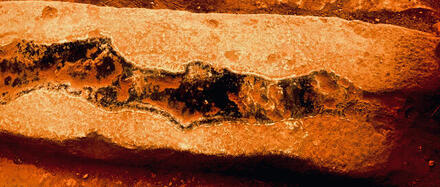On a Mediterranean island 5,000 years ago, a woman saw a snake. Thinking to eat it, the woman pursued the snake down a rocky crevice. The ground collapsed under her feet.
The woman struck her head in the cave beneath, and a vision screamed to her through the darkness and pain: It was the snake, now mighty and luminous, commanding that a temple be built underground to mirror the massive woman-shaped stone encirclings over which the island's people had patiently labored for centuries.
As the woman peered up at the light above and howled for help, the sound of her cries reverberated upon her body, and she realized that the design of the future temple must incorporate snake portals to channel the sound, because the sound carried power. She did not know that the snake, when stiffened, could later manifest as the staff of Moses curling into a serpent again before Pharaoh; that the snake could become the didgeridoo of the Australian aborigines, the ghaita of Morocco's Master Musicians, the bass clarinet of Eric Dolphy and the trumpet of Gabriel on Judgment Day. A symbol of knowledge and healing, the snake would be sacred to Athena, Hermes and the Goddess of Crete. And much more.
The woman did somehow sense that the underground temple would be formed with great imagination from the living rock, but for the moment she did not care about that, or the gash in her scalp or anything else. She was content to lie in the womb of the Earth, away from the hammer of the sun, forgetful of the surrounding sea's intimidating vastness. Like the rest of her people, she felt at home in a cave. Like the rest of her people, she could see in the dark -- see things not only outside herself, but inside.
As the woman drifted into unconsciousness, she felt that the dead would be brought here to sleep, to transform their vibrations into new life, life that would follow the snake back up to the light.

